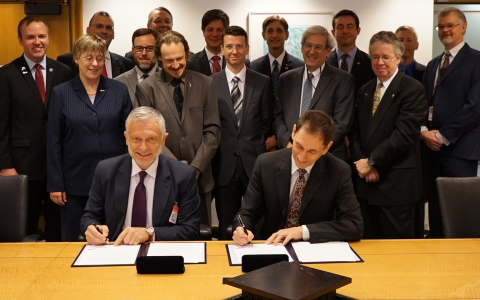
The arrangement articulates a shared U.S.-EU vision to pursue full, free, and open data policies for government Earth observation satellites. Such policies foster greater scientific discovery and encourage innovation in applications and value added services for the benefit of society at large.
The arrangement will allow experts from U.S. agencies, including the National Aeronautics and Space Administration (NASA), National Oceanic and Atmospheric Administration (NOAA), and the U.S. Geological Survey (USGS), to pursue cooperative data sharing activities with European counterparts, including the European Commission, the European Space Agency (ESA), and the European Organisation for the Exploitation of Meteorological Satellites (EUMETSAT). This cooperation will enhance data access, validation, and quality control as well as satellite system compatibility, interoperability, and instrument inter-calibration.
Today’s signing will help the United States and the European Union realize the full value of Earth Observation satellites for civil, commercial, and scientific applications in the public and private sectors, including climate change research, weather forecasting, ocean and atmospheric monitoring, land use management, and the management and mitigation of natural disasters. For example, oil spill detection in the Gulf of Mexico has already been enhanced by the cooperative use of the Copernicus constellation’s Sentinel 1A data.
For further information, please contact Kia Henry at HenryKT@state.gov.
Further reading:
+ European Union and United States Sign Cooperation Arrangement on Copernicus Earth Observation Data, ESA

Be Part of What’s Next: Emerging Applications of Landsat at AGU24
Anyone making innovative use of Landsat data to meet societal needs today and during coming decades is encouraged to submit and abstract for the upcoming “Emerging Science Applications of Landsat” session at AGU24.





